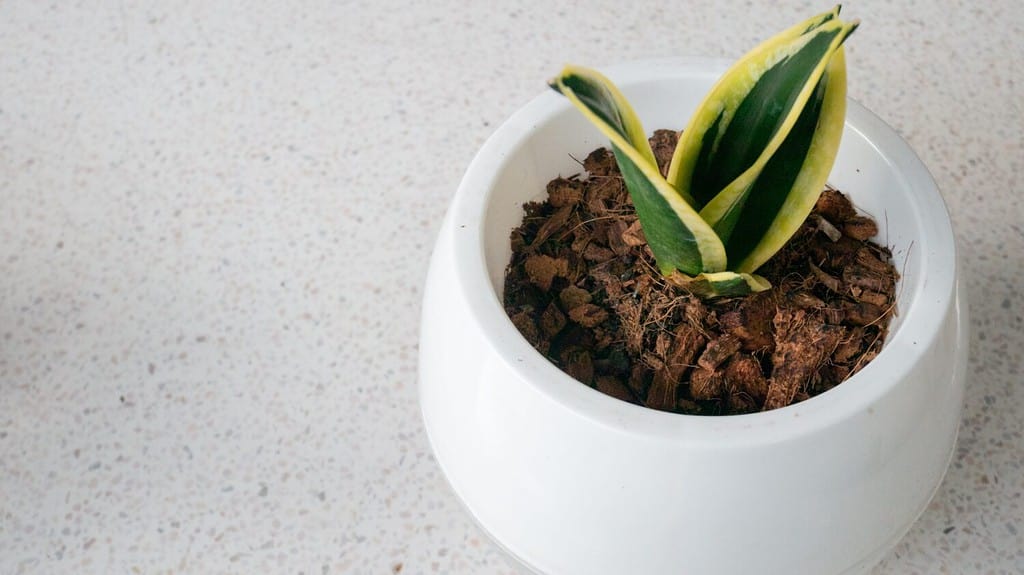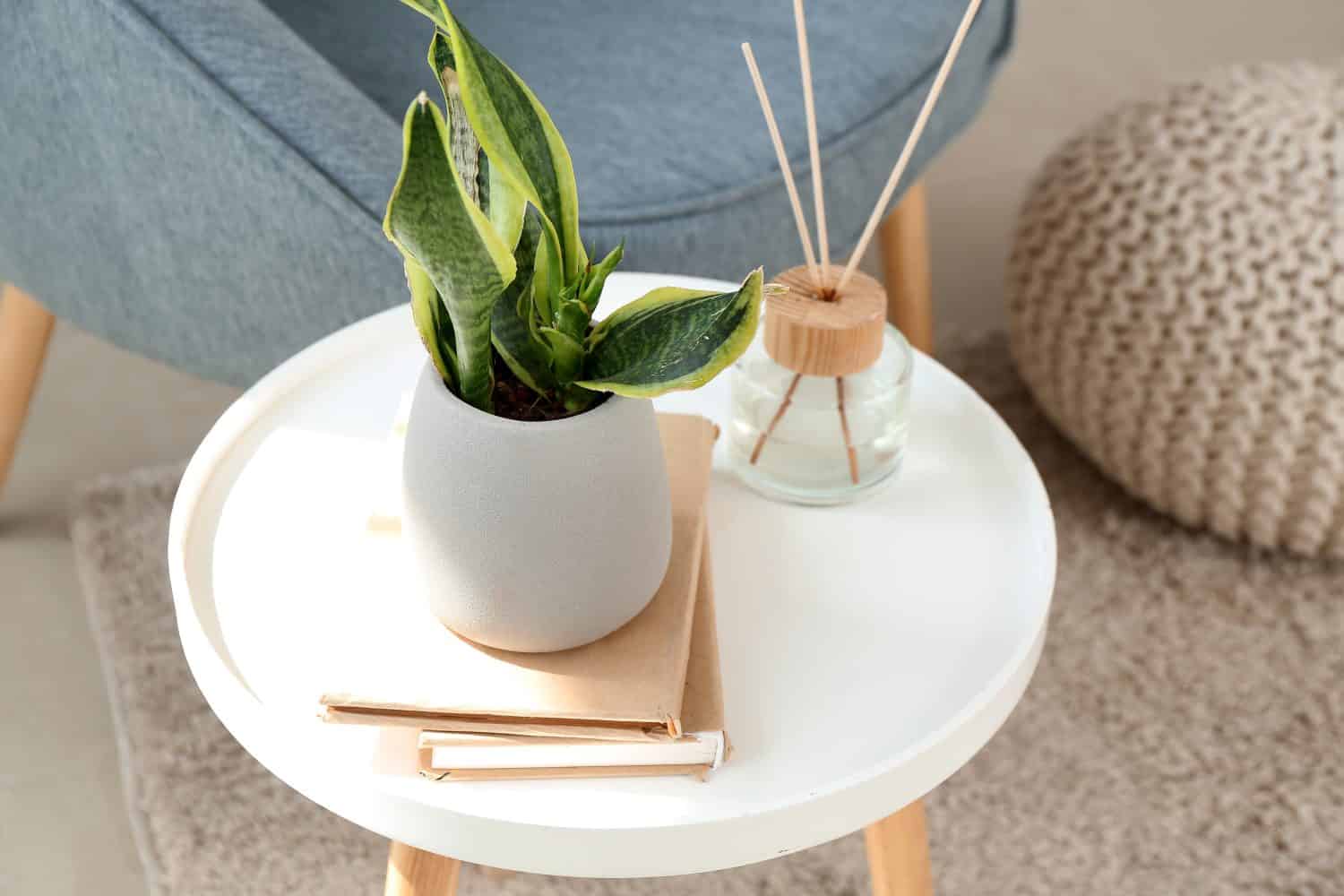Who doesn’t love snake plants!? This incredibly resilient houseplant doesn’t ask for a lot but gives so much in return — especially according to feng shui. In this article, we’ll go over the top three spots to put your snake plant based on its physiological needs, as well as the age-old Chinese practice of arranging space.
Best Spots to Put Your Snake Plant — A General Overview

Snake plants can live from 10 to 25 years with proper care.
©Adam Yee/Shutterstock.com
Snake plants are, thankfully, low-maintenance houseplants. They don’t need extensive care and can thrive in various conditions and environments. With that said, there are some things you’ll generally want to provide to your snake plant to ensure steady, healthy growth. These include:
- Moderate sunlight. Snake plants love sunlight, and will need at least moderate exposure to sun in order to grow. You should, however, always try to protect them from the hot summer sun.
- Average humidity. Snake plants like balance in all things, and the same goes for humidity. So, shoot for not too much, and not too little. We know this is easier said than done, but snake plants will likely be very forgiving even if you don’t get it 100% right.
- Warmth. As tropical plants, snake plants respond best to warm environments. Ideally, you’ll keep them in a warm spot between 65°F and 80°F.
You should consider all of these factors when deciding where to put your snake plant. You’re the one who knows your home environment the best!
So, Any Specific Recommendations?
With all of the above in mind, the best general spot to put your snake plant is six to 10 feet away from a window. This should give the plant moderate exposure to the sun while simultaneously protecting it from harsh and direct sunlight.
Of course, the best spot can vary by season. You may need to move your snake plant further away from the window during summer, or even move it to an entirely different place during winter to protect it from draft. If you do decide to move your snake plant during the year, make sure to do it gradually. Your plant will need some time to adjust to and thrive in new conditions.
Beyond that, you may also want to look into where to put your snake plant according to feng shui. Let’s discuss this in more depth below.
3 Best Spots to Put Your Snake Plant According to Feng Shui
With the practical matters out of the way, we can now see where feng shui advises keeping your snake plant. Before we dive in, however, it’s important to understand what snake plants represent in feng shui — or, rather, what this ancient Chinese tradition associates them with.
So, here’s a quick overview:
- Snake plants grow upward, which is why feng shui associates them with the vital energy called qi or chi. Qi/chi is thought to move upward as well.
- They are thought to embody the wood element, which represents primarily earthly matters, such as family, wealth, vitality, and health.
- Since snake plants are spiky, they are considered to have protective traits. However, they can also be associated with aggression and defensiveness.
To sum up, snake plants are associated with traditionally more masculine traits. They can offer you protection, confidence, and a sharp tongue when needed, such as during meetings or in other job-related situations. On the other hand, they may not be the best choice for improving your relationships.
1. At the Entrance for Protection

A snake plant at the entrance can protect your home from bad vibes.
©WuengDesign/Shutterstock.com
A snake plant at the entrance is thought to protect your home from bad energy, as well as the influence of the external environment in general. Feng shui also says it can attract wealth when placed here.
However, this placement can also have some potentially negative effects. According to feng shui, snake plants don’t exactly have a welcoming energy, so they may deter new people or opportunities from entering your home. Consider avoiding this placement if you want to invite novelty into your life or if you enjoy entertaining guests.
2. In the Southeast Corner for Prosperity and Wealth

Placing a snake plant in the southeast corner of your home is a good choice; putting it on the floor is not.
©Pixel-Shot/Shutterstock.com
In feng shui, the southeast corner of any building is called the wealth sector. It is associated with money, finances, and abundance in general (not strictly money-related). A snake plant harmonizes well with these energies, due to its own ties with wealth.
So, if you want to attract abundance, consider placing a snake plant in the southeast corner of your home. However, try to avoid putting the pot directly on the floor, as this prevents the air from flowing freely from and to it — a big no-no in the world of feng shui.
3. On or Near the Office Desk for Career Success

A snake plant placed on or near your office desk (for example, on a nearby chair), may positively influence your career.
©Siyanight/Shutterstock.com
According to feng shui, snake plants are the ideal houseplants for career success. In homes, they are thought to endow the residents with strength, confidence, and a go-getter attitude.
With that in mind, you can try placing them on your office desk. Alternatively, if your desk tends to get cluttered or offers little space as it is, consider placing them on a piece of nearby furniture instead. Again, just make sure to avoid putting them directly on the floor!
Where Not to Put a Snake Plant
According to feng shui and pure biology, snake plants don’t work well in bathrooms, living rooms, and bedrooms.
1. Bathroom
As mentioned, snake plants like moderate, not high humidity. Bathrooms, on the other hand, tend to be the most humid spaces in our homes.
So, although snake plants may be a nice addition to your bathroom, avoid placing them there. Exposure to high humidity could easily lead to rotting and cause your snake plant to die. This is also considered “bad” feng shui.
2. Living Room

Snake plants are thought to embody the wood element.
©Olena758/Shutterstock.com
According to feng shui, your home should have a perfect balance between different elements, such as wood and metal. Living rooms typically feature a lot of wood, and feng shui says snake plants embody wood, too. So, it’d be best to avoid putting your snake plant there to avoid creating an imbalance in your home.
3. Bedroom
You should avoid putting a snake plant in your bedroom, especially near a bed or a crib, as it may disturb your sleep. This is because snake plants are thought to radiate a lot of chi energy, which can make you feel the opposite of sleepy.
Also, as mentioned, snake plants are associated with more aggressive energy. It’s best not to bring those vibes into your relationship area, as it can start causing arguments and drive a wedge between you and your partner.
FAQ
Can I keep my snake plant outdoors?
In general, yes, you can keep your snake plant outdoors. Of course, this will depend on the weather conditions in your area, but snake plants are luckily very forgiving, tolerant, and resilient. They will thrive in almost any warm and bright place. With that said, you should generally avoid keeping them outdoors during winter.
Thank you for reading! Have some feedback for us? Contact the AZ Animals editorial team.








